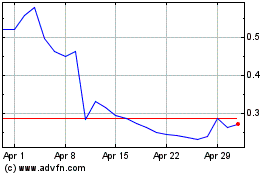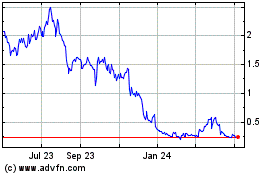UNITED STATES
SECURITIES AND EXCHANGE COMMISSION
WASHINGTON, D.C. 20549
FORM SD
Specialized Disclosure Report
Velo3D, Inc.
(Exact name of registrant as specified in its charter)
| | | | | | | | |
| Delaware | | 001-39757 |
(State or other jurisdiction of incorporation) | | (Commission file number) |
| | | | | | | | | | | |
| 2710 Lakeview Court, | | |
Fremont, | California | | 94538 |
| (Address of principal executive offices) | | (Zip code) |
Bradley Kreger, Interim Chief Executive Officer
(408) 610-3915
(Name and telephone number, including area code, of the person to contact in connection with this report.)
Check the appropriate box to indicate the rule pursuant to which this form is being filed:
| | | | | |
☒ | Rule 13p-1 under the Securities Exchange Act (17 CFR 240.13p-1) for the reporting period from January 1 to December 31, 2023 |
| |
| ☐ | Rule 13q-1 under the Securities Exchange Act (17 CFR 240.13q-1) for the fiscal year ended _______. |
| |
Section 1 – Conflict Minerals Disclosure
Item 1.01 Conflict Minerals Disclosure and Report
Conflict Minerals Disclosure
A copy of Velo3D, Inc.’s Conflict Minerals Report is provided as Exhibit 1.01 hereto and is publicly available at https://ir.velo3d.com/.
Item 1.02 Exhibit
As specified in Section 3, Item 3.01 of this Form SD, Velo3D, Inc. is hereby filing its Conflict Minerals Report as Exhibit 1.01 to this report.
Section 2 – Resource Extraction Issuer Disclosure
Item 2.01 Resource Extraction Issuer Disclosure and Report
Not applicable
Section 3 – Exhibits
Item 3.01 Exhibits
The following exhibit is filed as part of this report.
| | | | | | | | | |
Exhibit Number | | Description | |
1.01 | | | |
SIGNATURES
Pursuant to the requirements of the Securities Exchange Act of 1934, the registrant has duly caused this report to be signed on its behalf by the duly authorized undersigned.
| | | | | | | | | | | | | | |
| | | Velo3D, Inc. |
| | | | |
| Date: | May 31, 2024 | | By: | /s/ Bradley Kreger |
| | | Name: | Bradley Kreger |
| | | Title: | Interim Chief Executive Officer |
Velo3D, Inc.
Conflict Minerals Report for the year ended December 31, 2023
I. Introduction
Velo3D, Inc. (collectively with its subsidiaries, “we,” “our” or “us”) is a leading additive manufacturing technology company for mission-critical metal parts. We seek to fulfill the promise of additive manufacturing (“AM”), also referred to as three-dimensional printing, to deliver breakthroughs in performance, cost, and lead time in the production of high-value metal parts. We produce a fully integrated hardware and software solution based on our proprietary laser powder bed fusion technology, which greatly reduces and often eliminates the need for support structures. Our technology enables the production of highly complex, mission-critical parts that existing AM solutions cannot produce without the need for redesign or additional assembly. Our Sapphire family of systems give our customers who are in space, aviation, defense, automotive, energy and industrial markets the freedom to design and produce metal parts with complex internal features and geometries that had previously been considered impossible for AM. We believe our technology is years ahead of competitors.
Certain of our products contain materials or components containing tin, tantalum, tungsten and/or gold (“3TG”) that are necessary to the functionality or production of those products. As a result, we are obligated to comply with Rule 13p-1 under the Securities Exchange Act of 1934, as amended (the “Rule”). If a company is subject to the Rule, the company must generally investigate the origin of the 3TG in its products. If it appears the company’s 3TG may have originated in the Democratic Republic of the Congo or an adjoining country (the “Covered Countries”) and is not from scrap or recycled sources, the company must then exercise due diligence over the source and chain of custody of such 3TG and disclose certain information about its due diligence efforts in this separate Conflict Minerals Report.
Due to the depth of our supply chain, we are far removed from the sources of ore from which these 3TG are produced and the smelters/refiners that process those ores. Our efforts undertaken to identify the origin of those ores as described in this Conflict Minerals Report reflect our circumstances and position in the supply chain. We believe the amount of information that is available globally on the traceability and sourcing of these ores remains limited at this time. We also believe this situation is not unique to us.
II. Reasonable Country of Origin Inquiry
There are many layers between us and the smelters or refiners that produce the 3TG in our products, the exact number of which varies depending on the components provided to us by our suppliers. In all cases, we rely on our direct suppliers to provide information on the origin of 3TG contained in the components and materials they supply to us, including sources of 3TG that are supplied to them from lower-tier suppliers.
To gather this information, we retained a third-party service provider to conduct a reasonable country of origin inquiry, in which our service provider contacted our direct suppliers to request that they complete the Responsible Minerals Initiative’s Conflict Minerals Reporting Template (“CMRT”) regarding the presence and origin of the 3TG in the products and materials they supply to us.
Our service provider reviewed the responses received from our direct suppliers (or, in some cases, the supplier’s CMRT, if the supplier had already completed its own reasonable country of origin inquiry and opted to provide its own CMRT) and, if necessary, requested that our suppliers provide corrections and clarifications to resolve any incomplete or inconsistent information in their responses. For non-responsive suppliers, our service provider made multiple follow-up requests by email and telephone, and, if necessary, escalated the contact process to include direct outreach by us. Suppliers were given a final deadline of April 23, 2024, to provide information about the 3TG in their supply chains for the 2023 reporting year.
Overall, in cooperation with our third-party service provider, we identified a total 422 direct suppliers as being within the scope of our reasonable country of origin inquiry. Of those, 311 suppliers responded to our reasonable country of origin inquiry, for a response rate of 73.7%. As such, we believe our reasonable country of origin inquiry and process was reasonably designed and performed in good faith. However, there are inherent limitations in the information provided to us by third parties, including the possibility of information being inaccurate, incomplete or falsified despite our efforts to validate and confirm the information.
After reviewing the results of our reasonable country of origin inquiry, we determined that, of the 311 suppliers who responded to our reasonable country of origin inquiry, 171 suppliers indicated that 3TG was necessary for the functionality or production of the products they supply to us.
Based on our third-party service provider’s smelter/refiner database, we further determined that those 171 suppliers potentially source the 3TG in the products they supply to us from 349 verified smelters or refiners, and that certain of those 349 verified smelters or refiners potentially sourced their 3TG from a Covered Country during calendar year 2023. Therefore, we determined that the Rule required that we exercise due diligence on the source and chain of custody of such 3TG. We also identified scrap and recycled minerals as sources of materials in our supply chain.
III. Design of Due Diligence Framework
In cooperation with our third-party service provider, we designed our overall conflict minerals due diligence framework to conform in all material respects with the OECD Due Diligence Guidance for Responsible Supply Chains of Minerals from Conflict-Affected and High-Risk Areas, Third Edition (the “Guidance”).
IV. Due Diligence Measures
As part of our due diligence on the source and chain of custody of the necessary 3TG contained in our products that we had reason to believe may have originated from the Covered Countries, following our reasonable country of origin inquiry as described above, our third-party service provider reviewed the smelters and refiners identified as potentially being in our supply chain against the lists of smelters and refiners that have been assessed by the Responsible Minerals Initiative’s Responsible Minerals Assurance Process (the “RMAP”).
To the extent our service provider was not able to identify a smelter or refiner identified as potentially being in our supply chain as assessed by the RMAP, we attempted to contact the smelter or refiner to gain more information about its sourcing practices, including countries of origin and transfer, and whether the smelter or refiner has any internal due diligence procedures in place or has implemented other processes to track the chain of custody and source of its 3TG ores. Among the relevant information reviewed by us is whether the smelter or refiner has a documented, effective and communicated conflict-free policy or an accounting system to support a mass balance of materials processed and traceability documentation. We also performed Internet research to determine whether there are any outside sources of information regarding the smelter or refiner’s sourcing practices.
V. Due Diligence Results
Our due diligence results are inherently limited. As a downstream purchaser of 3TG, our due diligence measures can provide only reasonable, not absolute, assurance regarding the source and chain of custody of the necessary 3TG. Our due diligence processes are based on the necessity of seeking data from our direct suppliers and those suppliers seeking similar information within their supply chains to identify the original sources of the necessary 3TG. We also rely, to a large extent, on information collected and provided by independent third-party audit programs such as the RMAP. Such sources of information may yield inaccurate or incomplete information and may be subject to fraud. In addition, the majority of the responses and information received from our suppliers were provided at a company or enterprise level. Overall, sourcing information about our products in their entirety is not yet available, and we do not have sufficient information to conclusively associate specific smelters or refiners with the specific materials and components supplied to us (and therefore the specific products we manufacture).
VI. Process Considerations
We will continue to communicate our expectations regarding Conflict Minerals compliance and supply chain due diligence to our direct suppliers. We will also continue to undertake additional fact and risk assessments where necessary, and monitor changes in supplier circumstances that may impact their Conflict Minerals compliance and due diligence practices, which in turn may impact our continued engagement of and relationship with certain suppliers. As part of our risk mitigation efforts, we expect our suppliers who are using smelters or refiners that are not verified as conformant with the Responsible Minerals Assurance Process to publicly demonstrate progress toward a fully conformant supply chain. If we become aware of suppliers whose sourcing practices with respect to 3TG continually raise red-flag risks, we may take steps to reevaluate the business relationship with those suppliers. We expect our direct suppliers to take similar measures with their suppliers to ensure alignment with our sourcing philosophy throughout our supply chain.
VII. Independent Private Sector Audit
Pursuant to current guidance issued by the U.S. Securities and Exchange Commission, an independent private sector audit is not required for this Conflict Minerals Report.
Velo3D (NYSE:VLD)
Historical Stock Chart
From May 2024 to Jun 2024

Velo3D (NYSE:VLD)
Historical Stock Chart
From Jun 2023 to Jun 2024
